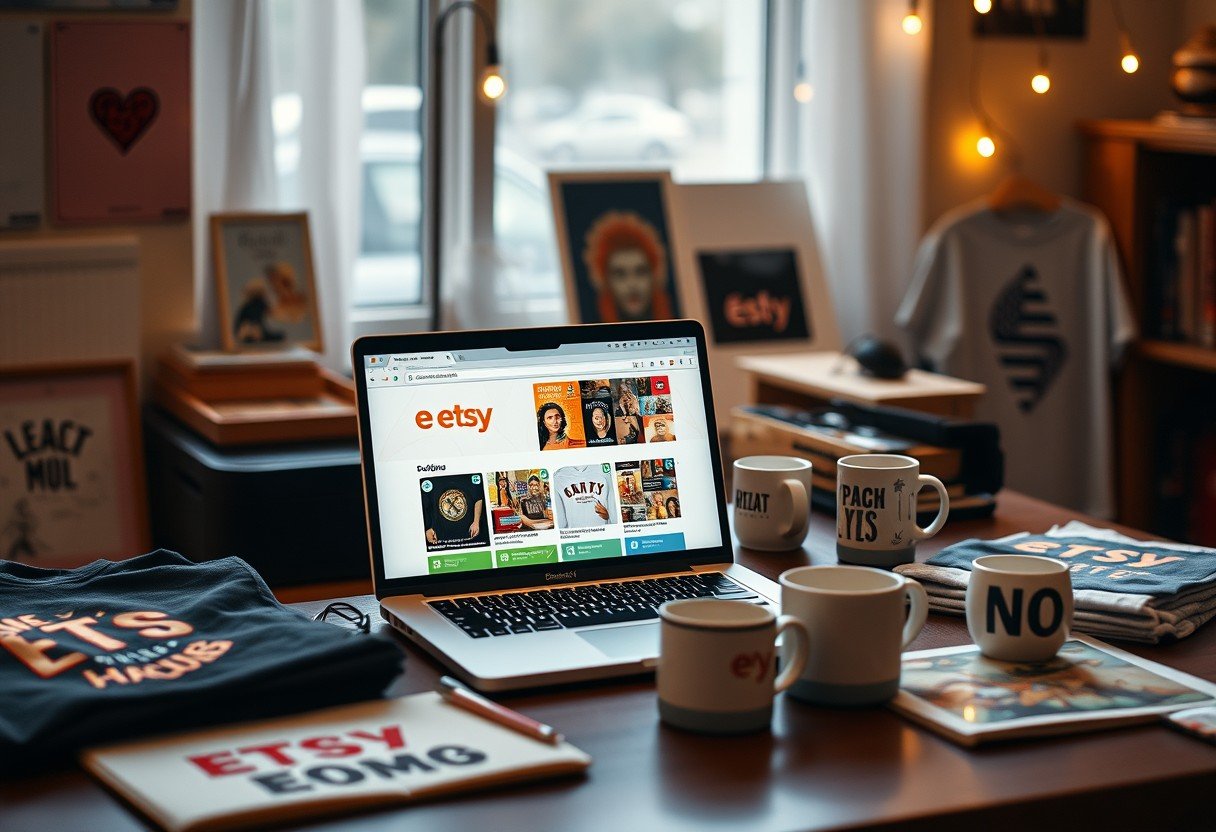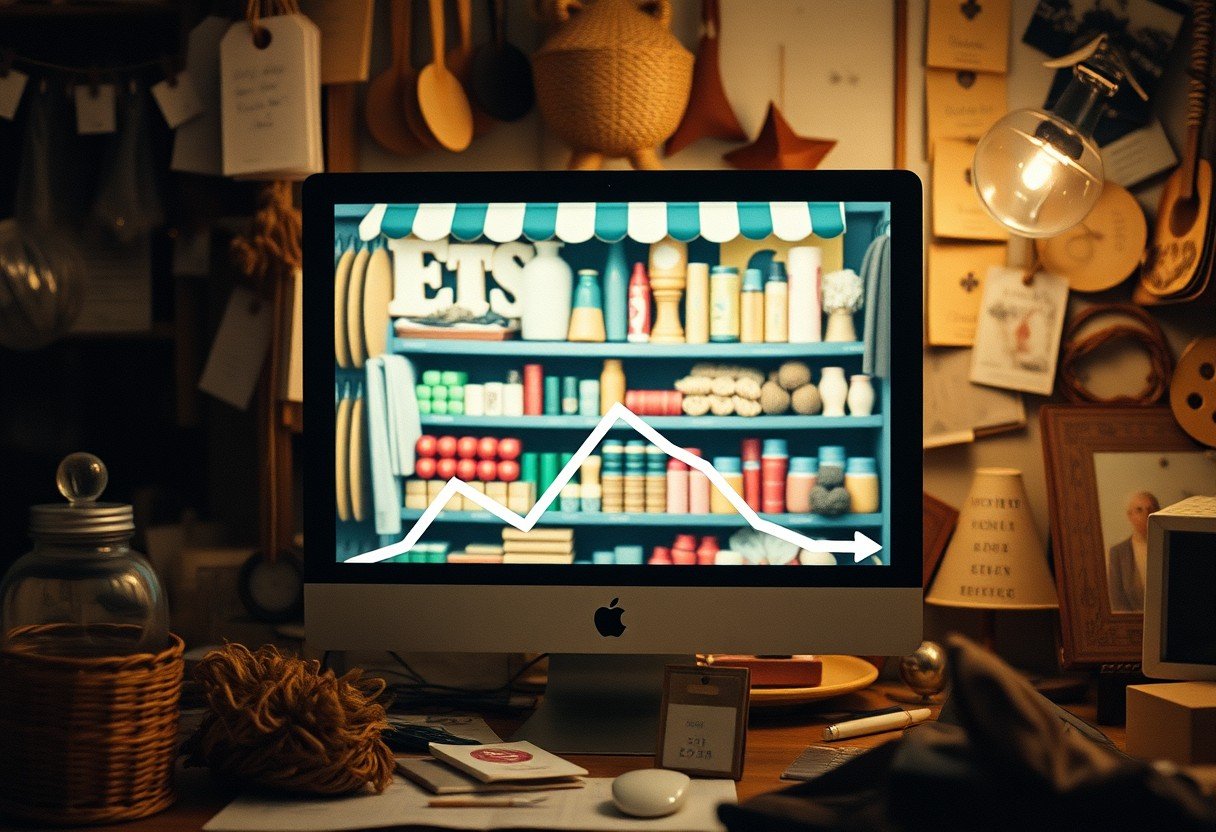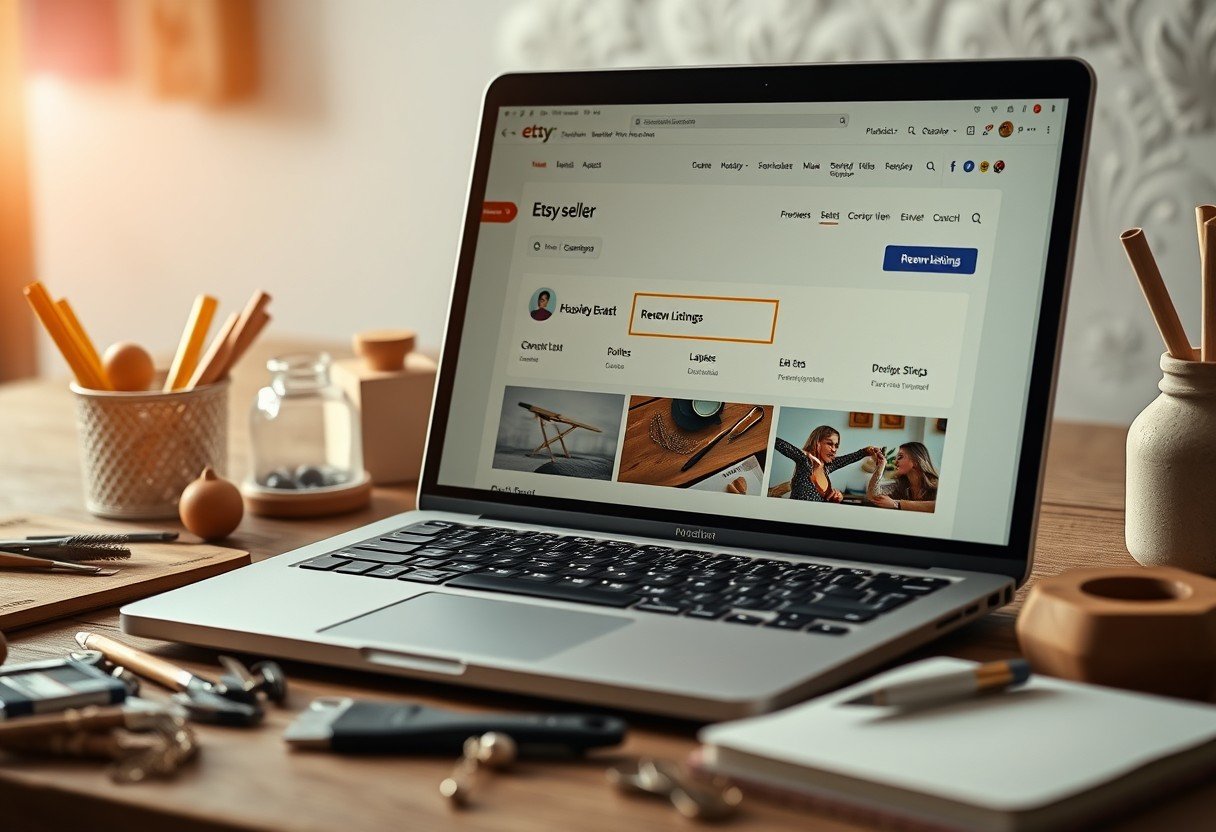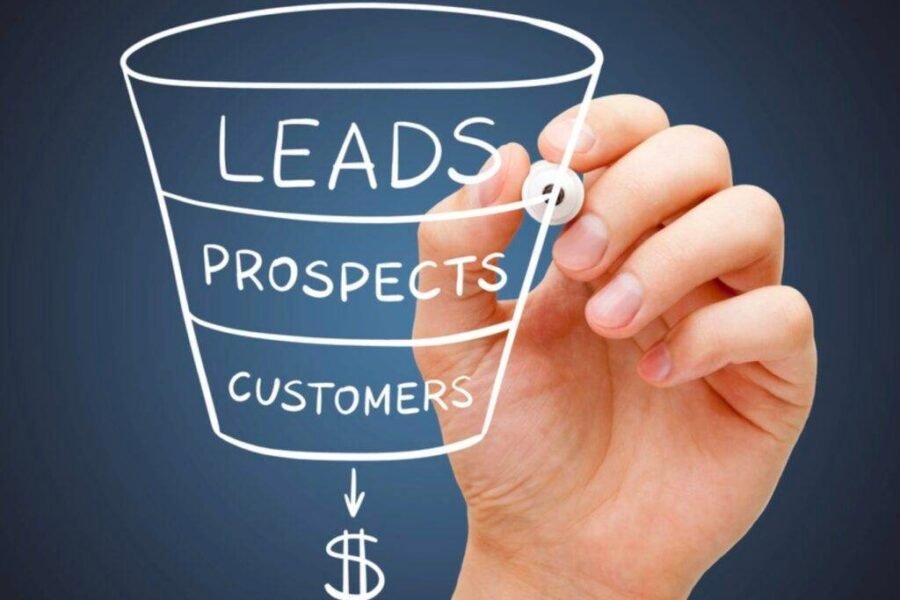Are you a creator wondering if you can sell custom-designed products on Etsy without handling inventory? The answer is yes. Etsy allows you to integrate your shop with third-party print on demand (POD) services. This model lets you sell items like t-shirts and mugs, which are only printed and shipped after a customer makes a purchase. It’s a popular, low-risk way for artists and entrepreneurs to start a business and focus on creativity rather than logistics.
What Exactly is the Print on Demand Model?
Print on demand is a fulfillment process where you work with a supplier to customize white-label products with your own designs and sell them on a per-order basis. This means you don’t pay for the product until after you’ve actually sold it, so there’s no need to buy in bulk or hold any inventory yourself.
When a customer buys a product from your Etsy shop, the order is automatically sent to your print provider. They handle everything from printing your design onto the product to packaging and shipping it directly to your customer. You simply create the designs and manage your online store.
This business model completely removes the financial risk and logistical headaches of managing stock. It opens the door for anyone with a creative idea to launch an e-commerce brand. You can offer a wide variety of products without ever needing a warehouse or dealing with unsold items.
How to Connect a Print Provider with Your Etsy Shop
Setting up your Etsy shop for print on demand is a straightforward process that connects two powerful platforms. By integrating a POD service, you automate the most time-consuming parts of running a product-based business. This lets you focus on what you do best: creating unique designs that people will love.
Follow these steps to get your print on demand store up and running:
- Create Your Etsy Shop: If you don’t already have one, the first step is to sign up on Etsy and set up your storefront. This includes choosing a shop name, setting up billing, and defining your shop policies.
- Choose a Print on Demand Partner: Research and select a POD provider that integrates with Etsy. Popular choices include Printful and Printify. Compare them based on product catalog, pricing, production times, and user reviews.
- Integrate Your Accounts: Once you’ve chosen a provider, create an account with them. Follow their instructions to connect or link your new POD account directly to your Etsy shop. This is usually a simple, guided process.
- Design and List Your Products: Use your provider’s tools to upload your designs onto their products, such as mugs, hoodies, or posters. Set your price, write a compelling product description, and publish the listing. The integration will automatically push the new product to your Etsy shop.
Once these steps are complete, your system is automated. When an order comes in through Etsy, it will appear in your POD provider’s dashboard, and they will begin the fulfillment process without you needing to do anything manually.
Key Advantages of Selling POD Products on Etsy
Using print on demand for your Etsy business offers a host of benefits, especially for new sellers or those looking to expand their product lines with minimal risk. The primary advantage is the elimination of large upfront investments in inventory.
Another major benefit is the efficiency it brings to your operations. You don’t have to worry about storage space, packaging supplies, or trips to the post office. Your print on demand partner handles the entire fulfillment process from start to finish. This frees up your time to concentrate on marketing, customer service, and creating new designs.
This model also gives you incredible flexibility to experiment. You can test new product ideas or design concepts without any financial commitment. If a design doesn’t sell well, you can simply remove it from your shop without worrying about unsold stock. This agility is a huge advantage in a competitive marketplace.
Navigating the Potential Challenges and Risks
While print on demand is an attractive model, it’s important to be aware of the potential challenges. Since you are not handling the products yourself, quality control can be a concern. The final product’s print quality, colors, and material are in the hands of your third-party provider. It’s wise to order samples before listing items to ensure they meet your standards.
You are also reliant on your provider for shipping and fulfillment times. Delays can happen, especially during busy holiday seasons, which can lead to unhappy customers. As the shop owner, you are still responsible for all customer service. This means you must communicate clearly with your buyers about potential delays and manage any issues that arise with orders, even if the fault lies with the fulfillment partner.
Finally, profit margins can be thinner compared to buying in bulk. The convenience of on-demand printing comes at a cost, as the base price per item is higher. You need to price your products carefully to cover Etsy’s fees, the provider’s costs, and still make a reasonable profit.
Etsy Print on Demand versus Other Platforms
Etsy is a fantastic marketplace for print on demand, but it’s not the only option. Understanding how it compares to other platforms can help you decide where to focus your efforts. Etsy’s main advantage is its built-in audience of millions of buyers specifically looking for unique, custom, and handmade-style goods.
Platforms like Redbubble and Amazon Merch on Demand offer different experiences. Redbubble is very artist-focused and handles almost everything for you, but offers less brand control. Amazon provides massive traffic but has stricter content rules and fierce price competition.
Here is a quick comparison of key features:
| Feature | Etsy | Amazon Merch |
|---|---|---|
| Audience | Niche, seeks unique & custom items | Massive, broad audience |
| Brand Control | High (custom shop, direct communication) | Low (standard product pages) |
| Competition | High, but focused on design quality | Extremely high, often price-driven |
Etsy gives you the tools to build a distinct brand and cultivate a loyal customer base. While other sites might offer a more hands-off experience, Etsy allows you to create a personalized shopping experience that can lead to greater long-term success.
Frequently Asked Questions About Etsy Print on Demand
Does Etsy have its own print on demand service?
No, Etsy does not directly provide print on demand services. It functions as a marketplace where you can sell POD products by integrating your shop with external, third-party fulfillment companies like Printful or Printify.
What are the main fees for selling POD on Etsy?
You will encounter several fees. Etsy charges a listing fee ($0.20), a transaction fee (6.5% of the total order amount), and payment processing fees. On top of that, your chosen print provider will charge you for the base cost of the product and shipping.
Who is responsible for shipping and returns?
Your print on demand provider is responsible for the physical act of printing and shipping the order to the customer. However, as the seller, you are fully responsible for setting your shop’s policies and handling all customer service, including managing any returns or exchanges according to your stated policies.
What are the most popular print on demand products to sell?
Some of the most consistently popular POD items on Etsy include graphic t-shirts, coffee mugs, tote bags, art prints and posters, and stickers. Seasonal items like sweatshirts and ornaments also sell very well during specific times of the year.
Can I use multiple print on demand providers for my Etsy shop?
Yes, you absolutely can. Using multiple providers is a great strategy to expand your product catalog, as different companies specialize in different types of products. You just need to manage the integrations for each provider you decide to work with.









Leave a Comment